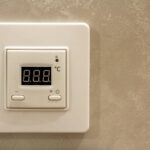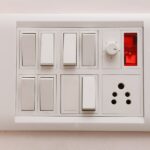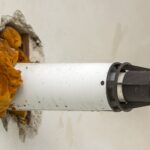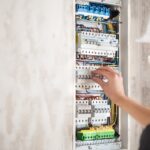Understanding fire system control panels
Fire system control panels are the brain of any fire protection system. These devices monitor and control various components throughout a building. They receive signals from detectors, process information, and activate alarms when necessary. Most modern panels can manage up to 2,000 individual devices. They also provide visual displays of system status and event logs. Some advanced models offer remote monitoring capabilities via smartphone apps. Fire system control panels are crucial for ensuring rapid response to potential fire hazards.
Control panels come in different sizes and configurations. Small buildings might use single-loop panels, while large facilities require multi-loop systems. Addressable panels offer precise location information for each device. Conventional panels are simpler but less detailed. Panel selection depends on building size, occupancy type, and local fire codes. Regular maintenance and testing of control panels is essential for system reliability. Most manufacturers recommend annual inspections by certified technicians.
Integration with other building systems is a key feature of modern control panels. They can interface with HVAC systems, elevators, and access control. This integration allows for coordinated emergency responses. For example, a panel might shut down air handlers to prevent smoke spread. It could also unlock doors for easier evacuation. Some panels can even send automated alerts to fire departments. These features significantly reduce response times in emergencies.
Battery backup is a critical component of fire system control panels. Most panels include built-in batteries that provide power during outages. These batteries typically last for 24 to 72 hours, depending on the system size. Regular battery replacement is necessary to maintain system reliability. Some advanced panels use lithium-ion batteries for longer life and better performance. Proper battery maintenance ensures continuous protection, even during power failures.
The importance of manual call points
Manual call points are essential components of any fire alarm system. These devices allow occupants to manually activate the fire alarm. They are typically located near exits and in common areas. Most building codes require at least one call point per floor. The maximum travel distance to a call point is usually 45 meters. Manual call points provide a quick way to alert others in case of fire.
There are two main types of manual call points: break glass and resettable. Break glass units require replacing the glass after activation. Resettable models use a plastic element that can be reset with a key. Both types are equally effective for alerting occupants. The choice between them often depends on maintenance preferences. Some facilities prefer resettable units to avoid glass replacement costs. Others choose break glass models for their traditional appearance and perceived reliability.
Proper placement of manual call points is crucial for effectiveness. They should be installed at a height of 1.2 to 1.5 meters from the floor. This ensures accessibility for most adults and children. Call points must be clearly visible and free from obstructions. Many facilities use signage or distinctive colors to make them more noticeable. Regular testing of manual call points is essential to ensure proper operation. Most fire codes require monthly or quarterly tests of these devices.
Weatherproof manual call points are available for outdoor installations. These units are designed to withstand rain, snow, and extreme temperatures. They often include special seals and protective covers. Outdoor call points are commonly used in parking garages, loading docks, and industrial areas. Some models include built-in heaters to prevent freezing in cold climates. Proper selection of outdoor units ensures reliable operation in all weather conditions.
Integrating modules and interfaces
Modules interfaces to the fire system expand the capabilities of control panels. These devices allow for integration with various building systems. Common modules include relay modules, input modules, and communication interfaces. Relay modules can control equipment like fans, dampers, and door holders. Input modules allow monitoring of external devices such as sprinkler flow switches. Communication interfaces enable connection to building management systems or remote monitoring stations.
Addressable modules offer precise location information for each device. This feature aids in rapid response and troubleshooting. Most modern fire systems use addressable technology. It allows for individual device programming and monitoring. Conventional modules are simpler but less flexible. They typically group devices into zones rather than individual addresses. The choice between addressable and conventional modules depends on system requirements and budget constraints.
Wireless modules are becoming increasingly popular in fire protection systems. These devices use radio frequency signals to communicate with the control panel. They eliminate the need for extensive wiring, reducing installation costs. Wireless modules are particularly useful in historic buildings or areas with difficult access. Battery life is a key consideration for wireless devices. Most modern units offer battery life of 3 to 5 years under normal conditions. Regular battery checks and replacements are essential for system reliability.
Interface modules for smoke control systems play a critical role in building safety. These devices coordinate the operation of fans, dampers, and other equipment during a fire. They ensure proper smoke evacuation and maintain clear escape routes. Smoke control interfaces often require special certification and testing. They must meet strict performance standards set by fire codes. Proper installation and maintenance of these modules is crucial for effective smoke management.
Ensuring comprehensive safety and fire protection
Safety and fire protection encompass more than just alarm systems. A comprehensive approach includes fire suppression, evacuation planning, and staff training. Fire extinguishers are a critical component of any protection strategy. Most codes require one extinguisher per 2,000 square feet of floor space. Regular inspection and maintenance of extinguishers is essential. Many facilities conduct monthly visual checks and annual professional inspections.
Emergency lighting and exit signs are crucial for safe evacuation. These systems must operate reliably during power outages. Most buildings require emergency lighting to last for at least 90 minutes. Exit signs should be visible from any point in a room or corridor. Regular testing of emergency lighting systems is mandatory in most jurisdictions. Many facilities conduct monthly 30-second tests and annual 90-minute tests.
Fire doors play a vital role in containing smoke and flames. They help prevent fire spread between different areas of a building. Most fire doors have a rating of 20 to 180 minutes. This rating indicates how long the door can withstand fire exposure. Proper maintenance of fire doors is crucial for their effectiveness. This includes regular checks of closing mechanisms, seals, and hardware. Many facilities conduct quarterly inspections of fire doors to ensure proper operation.
Staff training is a critical aspect of fire safety. All employees should know how to respond in case of fire. This includes understanding evacuation procedures and using fire extinguishers. Many organizations conduct annual fire safety training for all staff. Some facilities also designate fire wardens for each area. These individuals receive additional training in emergency procedures. Regular fire drills help reinforce training and identify potential issues. Most fire codes recommend at least two drills per year for commercial buildings.





